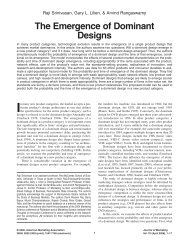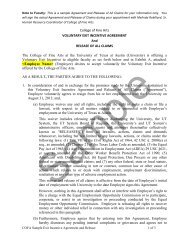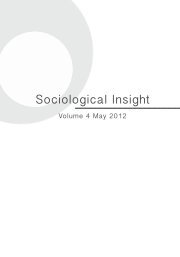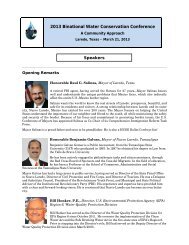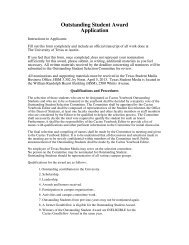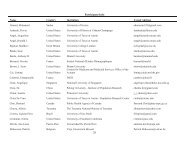Invited Talks: Transition Metal Oxides - University Blog Service - The ...
Invited Talks: Transition Metal Oxides - University Blog Service - The ...
Invited Talks: Transition Metal Oxides - University Blog Service - The ...
You also want an ePaper? Increase the reach of your titles
YUMPU automatically turns print PDFs into web optimized ePapers that Google loves.
<strong>The</strong> John B. Goodenough Symposium in Materials Science & Engineering –<br />
In Honor of His 90 th Birthday<br />
<strong>The</strong> <strong>University</strong> of Texas at Austin, Austin, Texas<br />
October 26-27, 2012<br />
New Iron <strong>Oxides</strong> by Soft Chemistry<br />
Mikio Takano<br />
Institute for Integrated Cell-Material Sciences (WPI-iCeMS), Kyoto <strong>University</strong>, Kyoto 606-8501, Japan<br />
takano@icems.kyoto-u.ac.jp http://www.icems.kyoto-u.ac.jp/<br />
Abstract Body in Space Below:<br />
(Please use single space, Times New Roman or similar font, size 12, and limit to 250 Words. Please DO NOT exceed the space<br />
below.)<br />
1: BaFe 4+ O 3 (BFO) A small class of oxides containing iron in a high valence state of Fe 4+ (d 4 ) have<br />
been known. <strong>The</strong> most representative phase is SrFeO 3 (SFO) which crystallizes in the cubic perovskite<br />
structure (a = 3.850 Å). All the Fe 2+ - and Fe 3+ -oxides are antiferromagnetic insulators in their ground<br />
states, while SFO and related Fe 4+ -oxides commonly exhibit shift toward metallicity and ferromagnetism.<br />
We succeeded in obtaining BaFeO 3 (BFO) crystallizing in the cubic perovskite structure (a = 3.971 Å),<br />
not in the known hexagonal perovskite structure, by flowing ozone over BaFeO 2.5 powder at a low<br />
temperature of 200°C. It has been found that BFO has a spiral spin structure of the A-type below 111 K<br />
but turns ferromagnetic with a large moment of 3.5 μ B /Fe on application of a small external field of ~0.3 T<br />
at 5 K (0.2 T at 77 K). BFO is the very first Fe-oxide that shows ferromagnetism at ambient pressure (N.<br />
Hayashi et al., Angew. Chem. Int. Ed., 43, 12547, 2011). <strong>The</strong> ferromagnetic transition temperature<br />
exceeds 300K as external pressure is increased up to 40 GPa as examined by in-situ Mössbauer<br />
measurements. <strong>The</strong> P-T phase diagram of BFO will be compared with that of SFO which shows pressureinduced<br />
ferromagnetism.<br />
2: Biogenous Iron <strong>Oxides</strong> (BIOX) Prof. J. Takada’s group (Okayama Univ.) has found that the Fe 3+ -<br />
based microtubular deposit produced by a species of water-habitant bacteria, Leptothrix ochracea, shows<br />
interesting unexpected functionalities as a catalyst support, as a starting materials for beautiful red<br />
pigments, and so on. Results of recent studies in which I have been involved will be presented.







